Mother Elizabeth Ann Seton is the first American saint — here's her incredible journey of faith
Elizabeth Ann Bayley Seton lived a dramatic life of hardship, devotion and miraculous acts recognized with her canonization as the first American-born saint in 1975 — over 150 years after she died.
Elizabeth Ann Bayley Seton glorified in action and in faith a unique status among her countrymen.
Meet Mother Elizabeth Ann — the first American-born saint.
She was a native of New York City, born on the eve of the American Revolution.
"She was an extraordinarily erudite, strong, independent woman, a socialite from a very respected family, and a patriot very interested in the events of the day and the fight for independence of the new nation," Cardinal Timothy Dolan, Archbishop of New York, told Fox News Digital in an interview last year about Seton.
MEET THE AMERICAN WHO REPORTED THE FIRST SENSATIONAL UFO ENCOUNTERS, PURITAN LEADER JOHN WINTHROP
"She was also a loving wife and mother. She was very strong in her Anglican faith, but felt this mysterial tug to the Roman Catholic faith, at a cost of great sacrifice. She embraced that faith here in New York."
Dolan was in the Vatican, he said, for Saint Elizabeth Ann Seton’s canonization under Pope Paul VI in 1975.
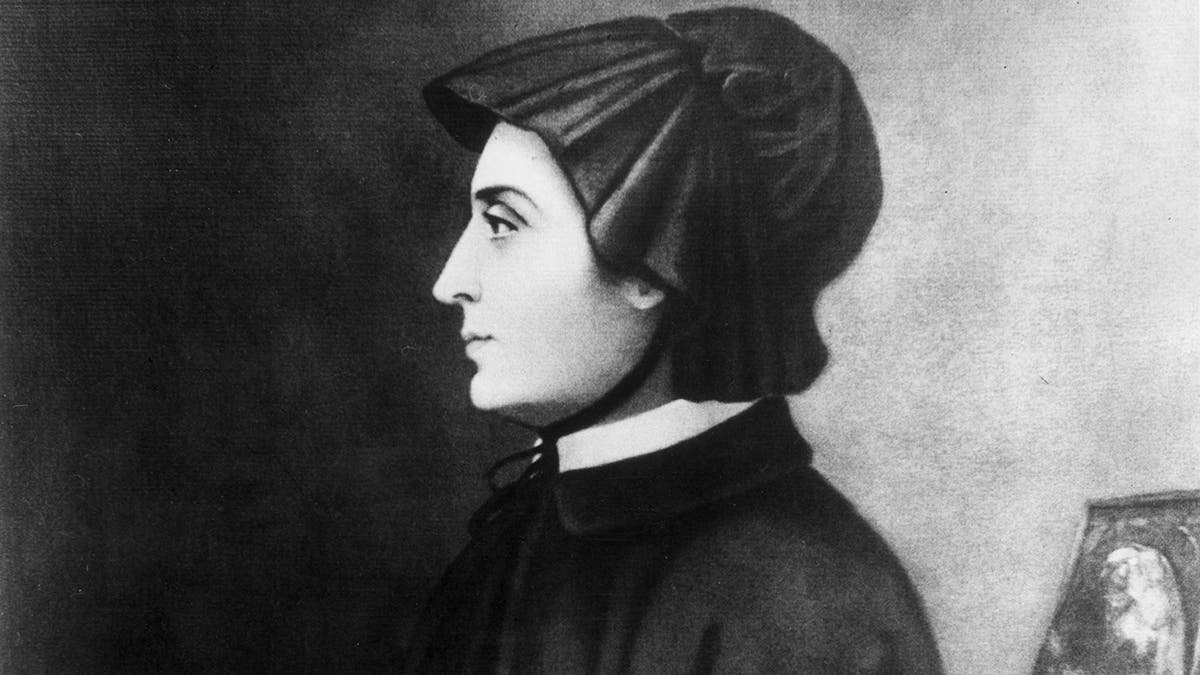
Elizabeth Ann Bayley Seton (1774-1821), founder and first superior of the Sisters of Charity, was born to a wealthy New York Protestant family. She married William Seton in 1794 — and after his death in 1803, she converted to Catholicism in 1805, opened a girls' school in Baltimore in 1808, took vows in 1813 and became mother superior of the Sisters of Charity. Beatified in 1963, she was canonized as the first American-born saint in 1975. (Hulton Archive/Getty Images)
"She was a charming little girl, small-boned and dainty, with great brown eyes and a face like a cameo, who from the very first loved God and wanted to be good," author Mary Reed Newland wrote in "The Saint Book" in 1979.
Yet Seton suffered tragedy early in life, losing her mother at age three, then enduring extreme hardship as a widowed mother of five children by age 30.
"Rejoice for your glorious daughter." — Pope Paul VI
She lost two of those children to tragic deaths in the decade that followed.
St. Elizabeth Ann Seton also knew poverty and then prejudice and rejection from the New York City establishment upon her conversion to Catholicism.
"God is with us — and if sufferings abound in us, his consolations also greatly abound, and far exceed all utterance," Seton wrote in her journals.
"[I was] not only willing to take my cross but kissed it, too."
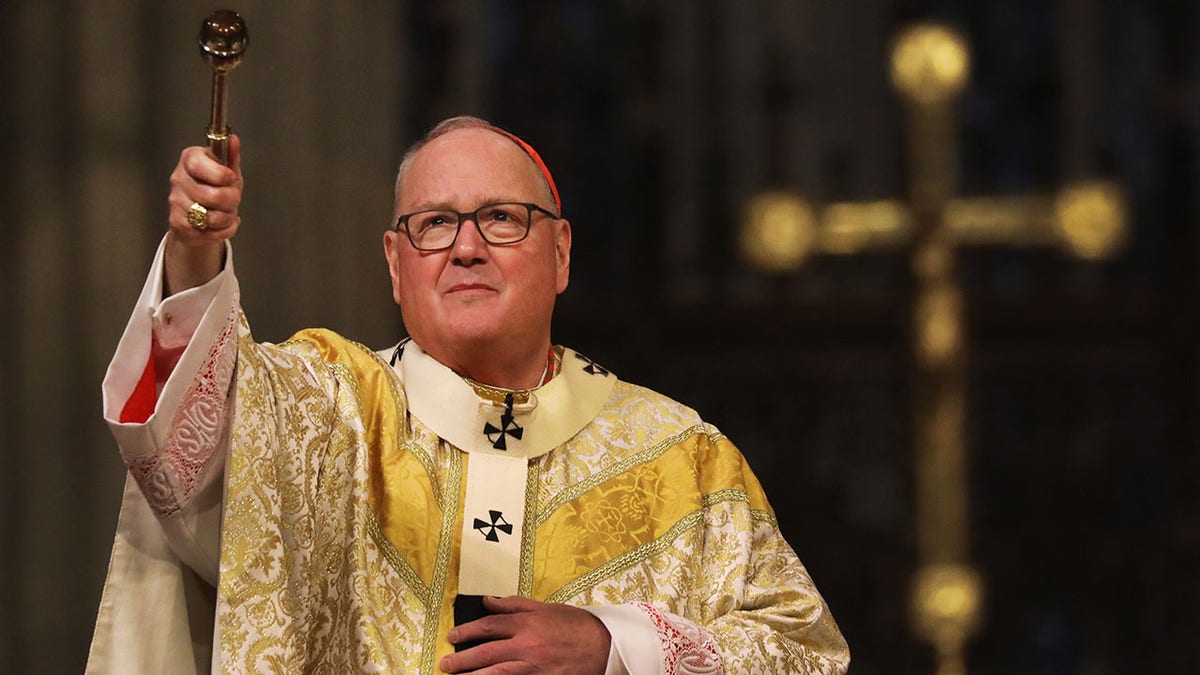
Cardinal Timothy Dolan, Archbishop of New York. "I’ve always been fascinated by [Saint Elizabeth Ann Seton] and just proud to claim her as a New Yorker," Dolan told Fox News Digital in an interview last year. "I seek her intersession on behalf of the faith each morning." (Spencer Platt/Getty Images)
She overcame adversity to pioneer Catholic education in America, form the Sisters of Charity, a nationwide network of religious communities, and, after her death, intercede in the miraculous recovery of three terminally ill people around the United States.
THE SCIENCE BEHIND WHY ‘MEAN GIRLS’ ARE OFTEN SO POPULAR — EVEN AS ADULTS
The incredible acts of healing, each one unexplained by science, propelled her to sainthood more than a century after a brief life filled with incredible drama and achievement.
"She loved God and she loved to do his will," Anne Merwin, author of "Saints By Our Side: Elizabeth Ann Seton," told Fox News Digital.
"She put her faith ahead of everything."
Child of the Revolution
Elizabeth Ann Bayley was born in colonial New York City to Richard and Catherine (Charlton) Bayley on Aug. 28, 1774.
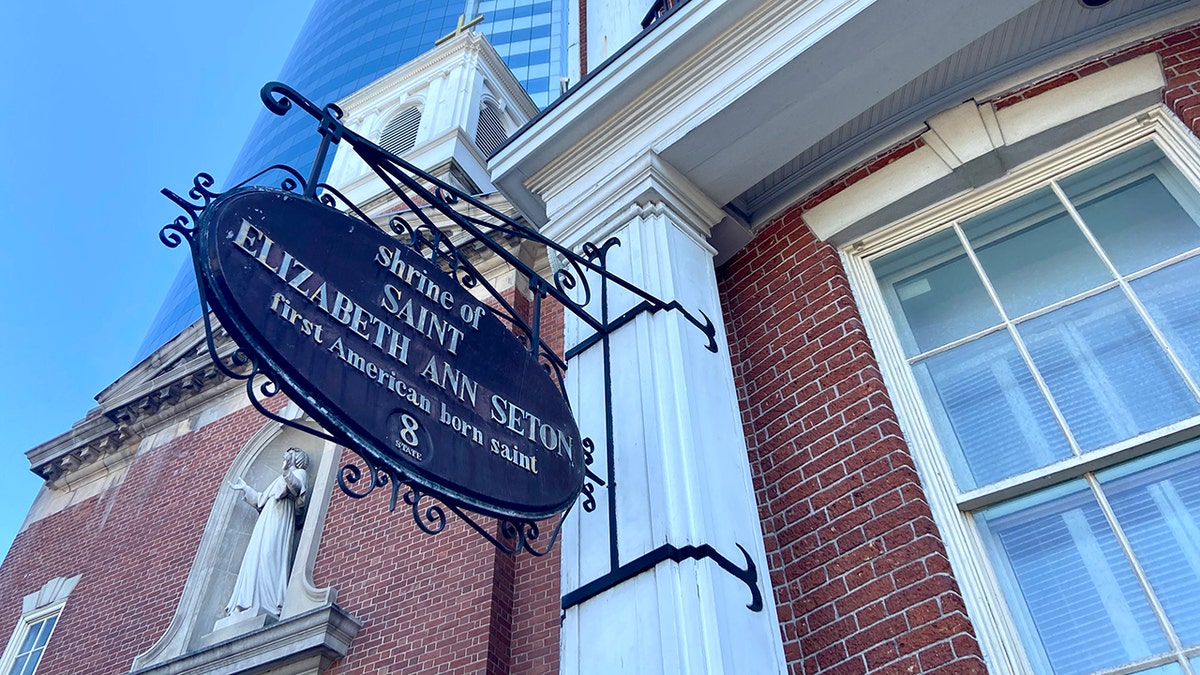
St. Elizabeth Ann Seton was born and raised in New York City. Her former home at 7 State Street, at the far southern tip of Manhattan, is now the Saint Elizabeth Ann Seton Shrine. (Kerry J. Byrne/Fox News Digital)
It was a city in turmoil, bursting at the seams with new settlers, battling infectious disease and on the brink of rebellion.
Her parents were prominent members of the Episcopal Church. Richard Bayley was a renowned epidemiologist, New York City’s first chief health officer and an expert in yellow fever, which often swept over the American colonies with deadly results.
"As a child of the American Revolution, Elizabeth possessed the same qualities its leaders had: faith, foresight and fortitude," author Merwin writes.
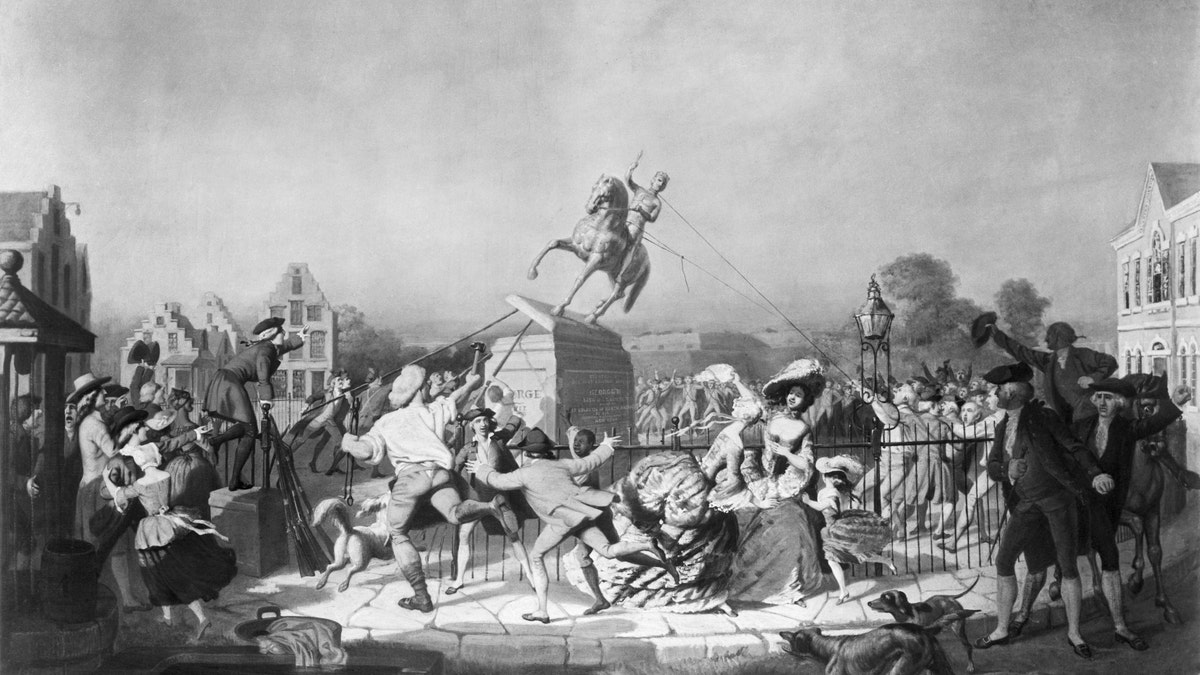
American colonists toppled a statue of King George III on Bowling Green in Lower Manhattan on July 9, 1776. Elizabeth Ann Bayley, the first American saint, was born steps away from Bowling Green just two years earlier. (William Walcutt (1819-1895); painted 1857)
She married William Magee Seton in 1794. His father, also William, was a wealthy shipping merchant and treasurer of the Bank of New York, which was founded by their neighbor, Alexander Hamilton.
MEET THE AMERICAN WHO INSPIRED THE NATION IN TWO WORLD WARS: CHRISTIAN SOLDIER SGT. ALVIN YORK
At the time of their marriage, war hero Hamilton was the first secretary of the U.S. Treasury.
"Elizabeth socialized with elite New Yorkers of her time," writes the website of St. Peter’s Church in Manhattan.
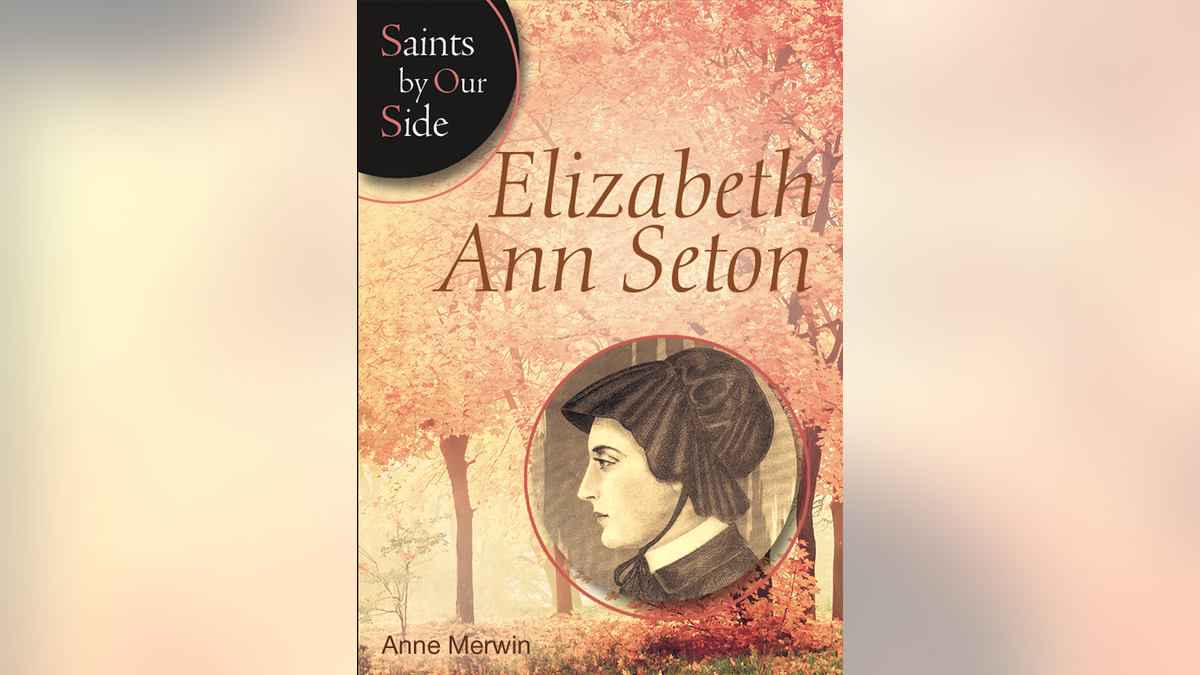
"Saints by Our Side: Elizabeth Ann Seton" (2014) was written by Anne Merwin, who — like Seton — was an Episcopalian who converted to Catholicism as an adult. The author only learned of Seton's incredible story after moving to Maryland and becoming filled with the spirit of the first American-born saint. (Courtesy Pauline Books and Media)
"With the aid of several other women including Mrs. Alexander Hamilton, Elizabeth Seton organized New York’s first private charity, the Society for the Relief of Poor Widows with Small Children, at Trinity Church."
"Elizabeth socialized with elite New Yorkers of her time." — St. Peter's Church of NYC
The good times soon ended.
The Setons’ shipping business went bankrupt amid piracy and ongoing conflict in Europe. Her young husband grew ill.
The couple, with their oldest daughter Anna Maria, made the long journey to Italy in 1803 "to aid in his recovery," the church writes.
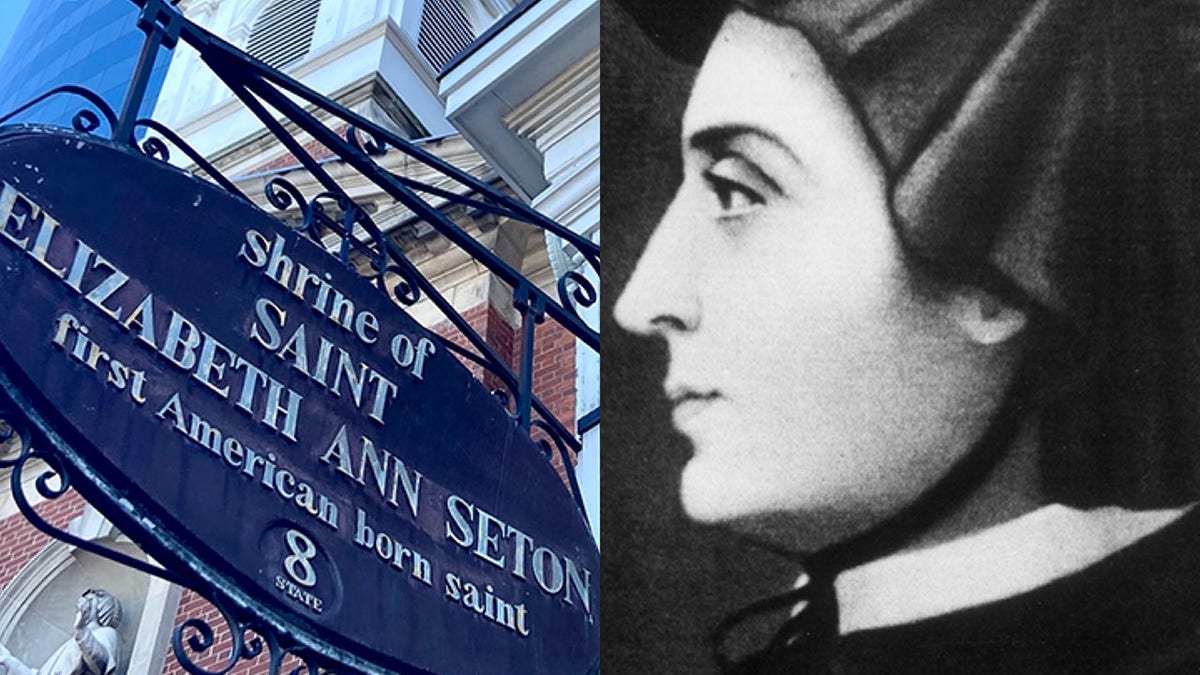
Saint Elizabeth Ann Seton, born in New York City in 1774, "was impressed with [the] devout Catholicism" of those she met in Italy, who took her in when her husband passed away. "When she and her daughter returned to New York a year later, and to the horror of Elizabeth’s family and friends, she decided to convert." (Fox News Digital; Getty Images)
Author Merwin notes he was also likely seeking reprieve from creditors. William Seton died of tuberculosis in Italy on Dec. 27, leaving Seton a widow far from home.
"His business partners, the Filicchi family (of Italy), extended hospitality to Elizabeth and her daughter," the church and other biographers note.
"Elizabeth was impressed with their devout Catholicism. When she and her daughter returned to New York a year later, and to the horror of Elizabeth’s family and friends, she decided to convert."
She was received into St. Peter’s Church on March 14, 1805. Eleven days later, "she made her First Communion with extraordinary fervor," according to church documents.
St. Peter’s was the only Catholic Church in New York City at the time — a testament to the shock it must have been to friends and family that she’d join such a minority congregation.
St. Peter’s Church is still there today, though in a newer building, at 22 Barclay Street, steps from the World Trade Center. It’s the oldest Catholic parish in New York State.
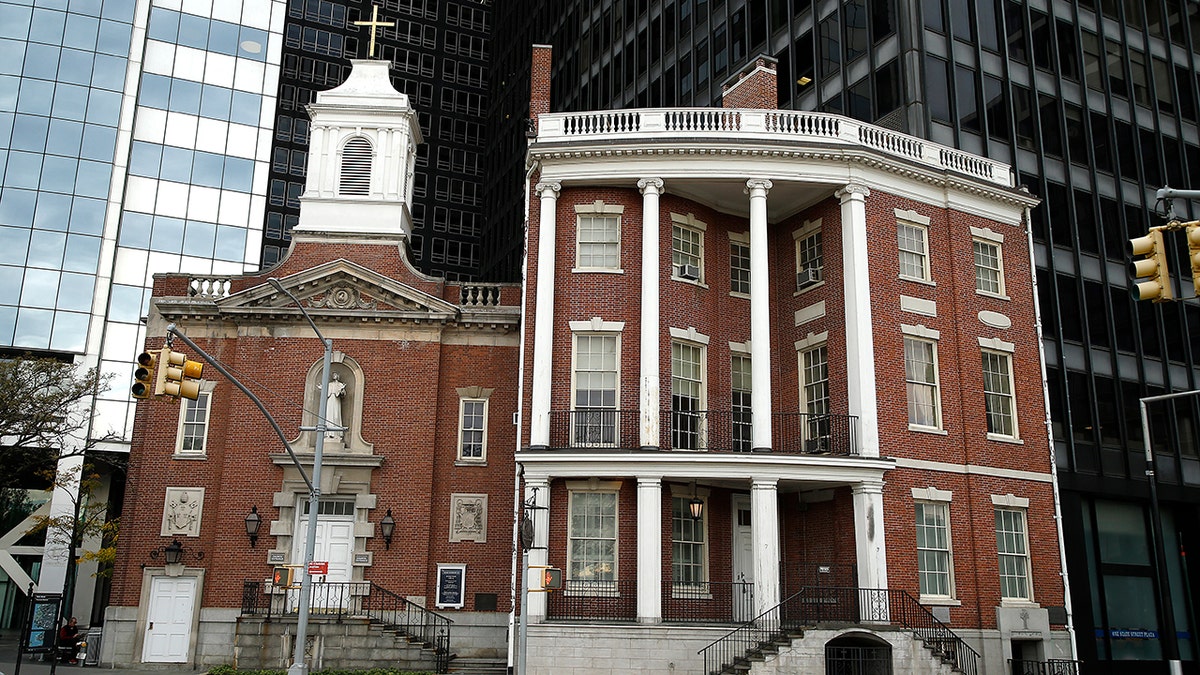
The Shrine of St. Elizabeth Ann Bayley Seton is located in the Church of Our Lady of the Holy Rosary, shown here on Oct. 27, 2020 in New York City. The structure opened in 1965. (John Lamparski/Getty Images)
She opened a school for boys, though it soon collapsed after New York City families removed their children from it after learning she had converted to Catholicism.
With little income, with five children, and now branded a spiritual pariah in the eyes of the city in which she was raised, Elizabeth Ann Seton moved to Maryland — and devoted her life to Christ.
Education, faith and three miracles
Seton was offered a teaching job at St. Mary’s College by Catholic leaders in Baltimore, where the church was more firmly established.
"She accepted and left New York for good on June 8, 1808," notes the Shrine of St. Elizabeth Ann Seton in Baltimore.

View of a building that houses the Mother Seton Guild hall (4 East Main Street) and the Knights of Columbus Brute Council No. 1860 (9 East Main St.) in Emmitsburg, Maryland. The photo was taken on the day that Elizabeth Ann Seton (1774-1821), who founded the Sisters of Charity of St Joseph's, was canonized by Pope Paul VI in Rome. She became the first native-born American Roman Catholic Saint. (Ann E. Zelle/Getty Images)
Before long, she opened a Catholic school dedicated to educating girls.
"Catholic women from around the country came to join her work and, over time, they created a convent," writes the National Women’s History Museum.
"The women soon moved to Emmitsburg, Maryland, where they formally began their religious life as Sisters of Charity of St. Joseph's on July 31, 1809. This was the first sisterhood in the United States."
Her work as an educator and faith leader was thriving. But tragedy struck Seton again.
Two of her daughters, just teens at the time, died of tuberculosis: Anna Maria in 1812 and Rebecca in 1816.
"Never can a child know what a mother suffers," Seton once wrote. "Our God alone knows a mother’s heart and he will pity us."
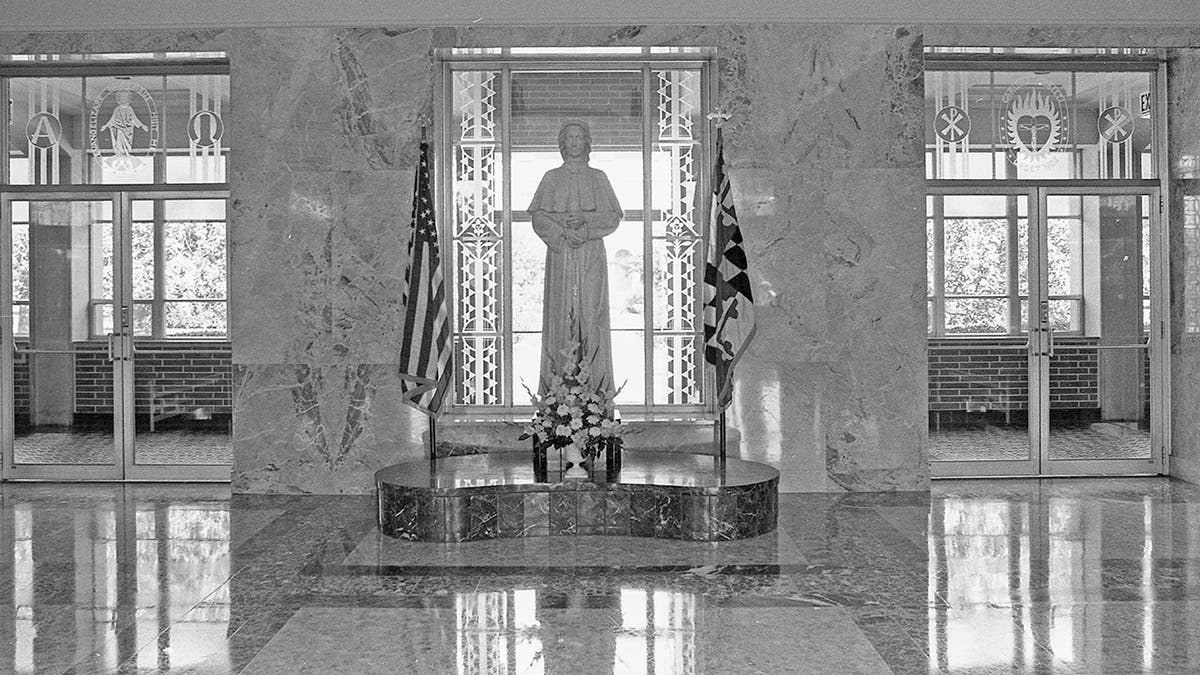
View of a statue of Elizabeth Ann Seton in the Shrine Chapel at the Basilica at the National Shrine of Saint Elizabeth Ann Seton, Emmitsburg, Maryland, on Sept. 14, 1975. The photo was taken on the day that Seton (1774-1821) was canonized by Pope Paul VI in Rome. (Ann E. Zelle/Getty Images)
The Sisters of Charity began sending missions around the country.
Her example of faith was so strong that her name was called upon by healing prayers of the faithful well into the 20th century. She is credited with three miracles.
"Never can a child know what a mother suffers." — St. Elizabeth Ann Seton
Sister Gertrude Korzendorfer of New Orleans made a full recovery from pancreatic cancer deemed inoperable by doctors in 1934 after beseeching the aid of Mother Elizabeth Ann.
Then, Ann Theresa O’Neill, just four years old, was cured of acute lymphatic leukemia in Baltimore on Easter week in 1952, after Sister Mary Alice prayed to Seton on the toddler’s behalf.
"The priest had already been by to give her the final blessing," the Baltimore Sun wrote of the event in 1994.

St. Elizabeth Ann Seton statue at St. Peter's Church in downtown Manhattan, where Elizabeth Ann Seton was confirmed Catholic in 1805. (Kerry J. Byrne/Fox News Digital)
"Even decades later, renowned hematologists and oncologists would be unable to explain her recovery."
The most dramatic miracle attributed to Seton came in Yonkers, New York, in October 1963, in room 308 of St. Joseph’s Hospital.
MEET THE AMERICAN WHO WROTE ‘BEN-HUR: A TALE OF THE CHRIST’: UNION GENERAL LEW WALLACE
"Carl Kalin, then 61 years old, lay in a coma with a rare brain disease, while the Sisters of Charity in the entire New York community prayed to their foundress, Mother Elizabeth Ann Seton, for his recovery," The New York Times reported on the day of her canonization in 1975.
"Then a relic, a sliver of her bone, was brought to the hospital to reinforce the prayers, placed on his body, and a few hours later he awoke."
Longtime St. Joseph’s physician Dr. Paul Tucci was quoted in the story.
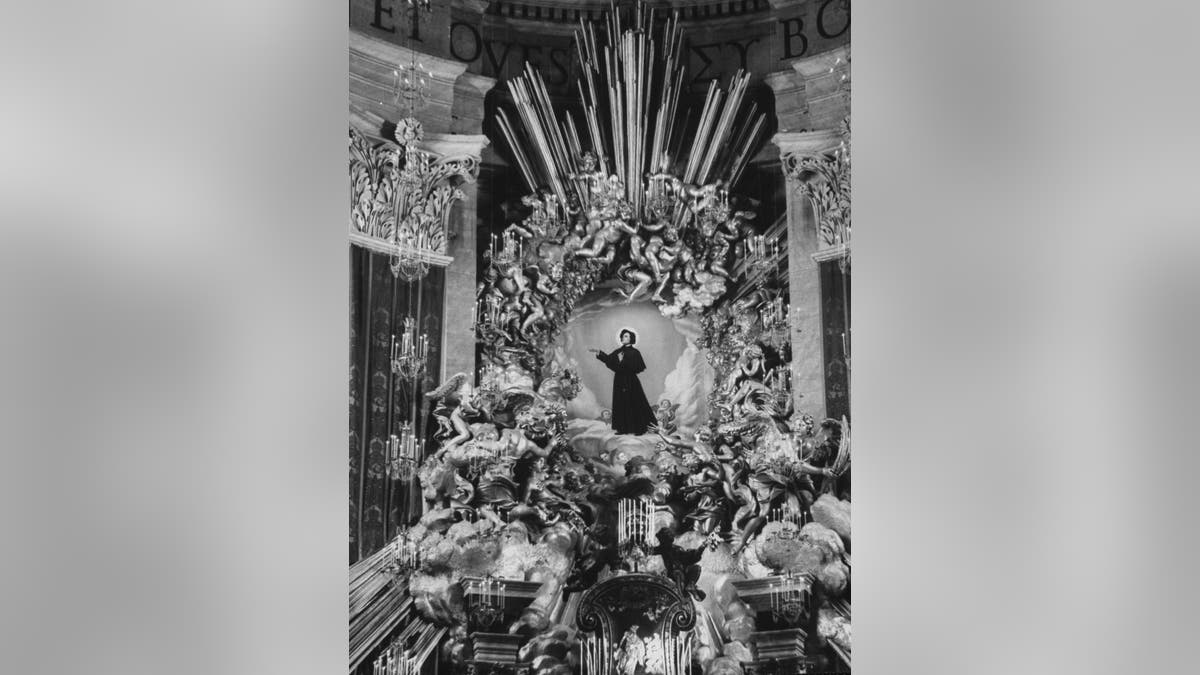
Tapistry of Mother Elizabeth Ann Seton hanging in St. Peter's Cathedral during beatification ceremonies. (David Lees/Getty Images)
"Medicine is not just science and art," the doctor said.
"There's a certain amount of spirit, too, and that makes for a totality of people. I think it was a miracle."
‘Human, historical, holy story’
Mother Elizabeth Ann Seton died on Jan. 4, 1821 in Emmitsburg, Maryland.
She was just 46 years old.
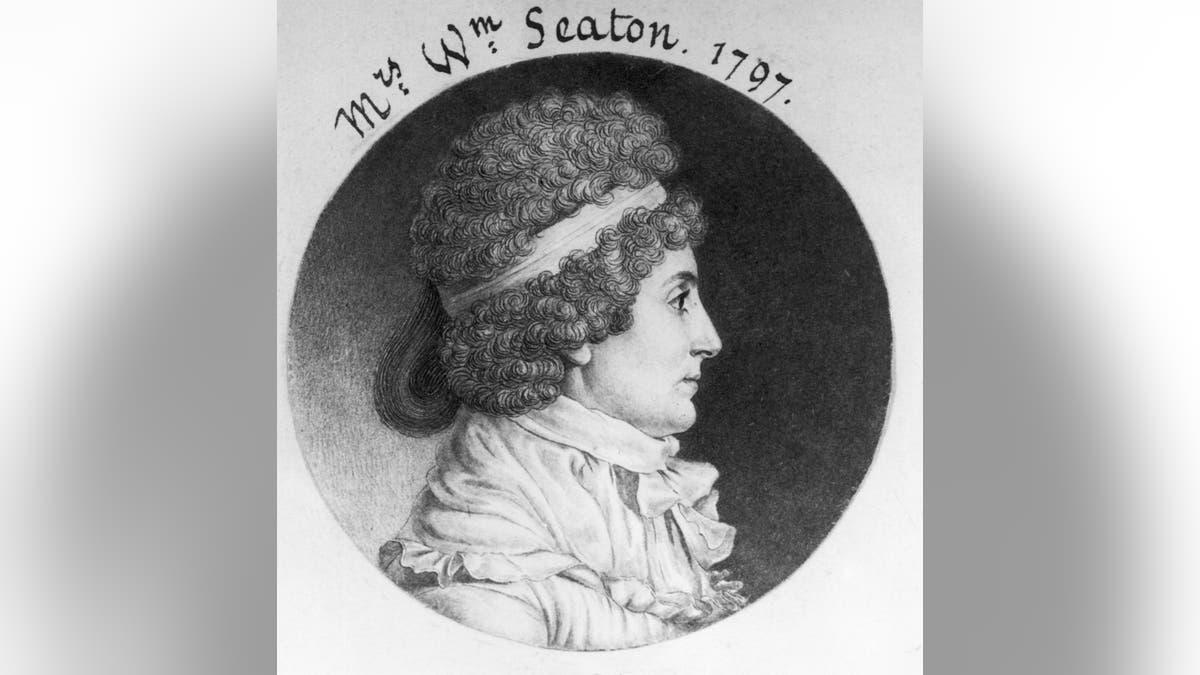
Elizabeth Ann Bayley Seton (1774-1821) was canonized as the first American-born saint in 1975. (Hulton Archive/Getty Images)
She is buried at the National Shrine of St. Elizabeth Ann Seton in the town where she died.
Another Shrine of St. Elizabeth Ann Seton is found today at 8 State Street at the extreme southern tip of Manhattan, the oldest part of New York City. It's the site of the home where she once lived.
Her contributions to Catholic education live on in schools she helped found in Maryland, and in those developed with her curriculum or bearing her name across the United States, in the Philippines and in Australia.
Seton Hall, a Catholic university in New Jersey known nationally for its basketball program, was founded by her nephew, the Rev. James Roosevelt Bayley — and named in her honor.

Students, fans and cheerleaders for the Seton Hall Pirates support their school against the Xavier Musketeers during their Big East conference regular season game at Prudential Center on Jan. 31, 2015 in Newark, New Jersey. Seton Hall University is named for Elizabeth Ann Seton, the first American-born saint. (Chris Chambers/Getty Images)
Her spiritual communities spread, too.
"The work of her sisters has steadily grown over the last 160 years," states the Catholic Community of St. Elizabeth Ann Seton of Plano, Texas.
"Five of these communities are now independently organized and are called Sisters of Charity. The sixth is the American Daughters of Charity."
CLICK HERE TO SIGN UP FOR OUR LIFESTYLE NEWSLETTER
The American Daughters of Charity united with the French Daughters of Charity in 1850 to form what the Catholic Community of St. Elizabeth Ann Seton calls the "largest order of religious in the church" — it has 32,000 members across the world.
"In the United States, the Daughters of Charity staff hospitals, child care institutions, home for the aged and handicapped, and schools at every level," the group notes.
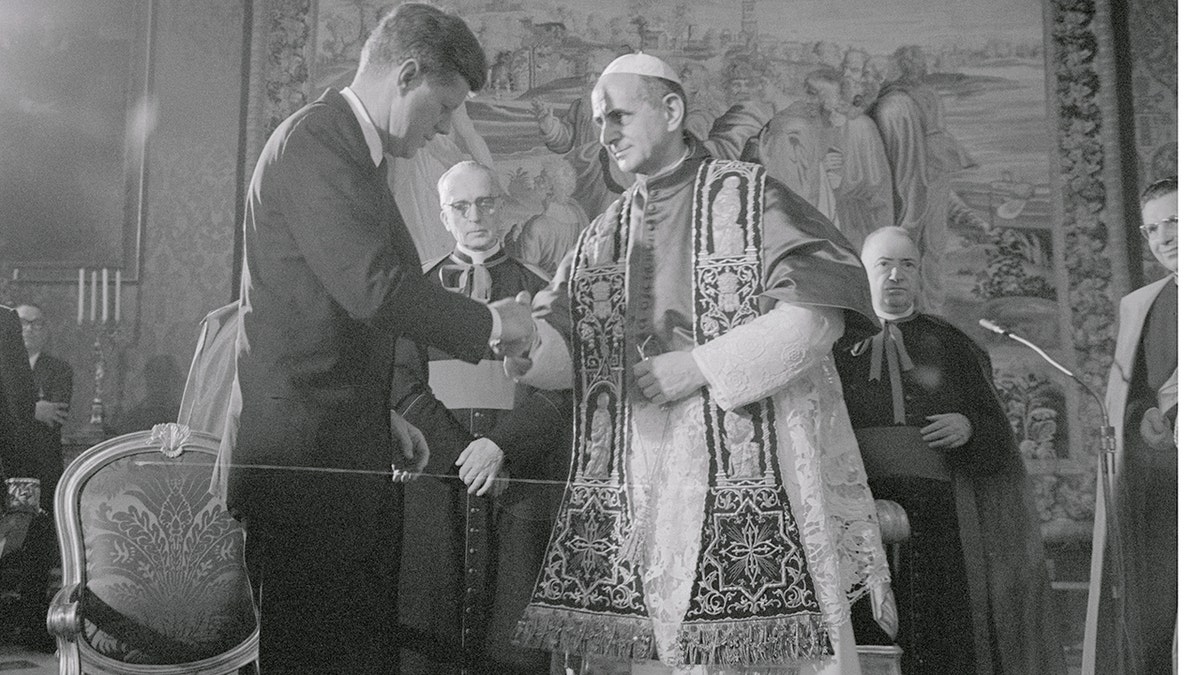
Pope Paul VI and President John F. Kennedy shake hands during their meeting at the Apostolic Palace. The pontiff received Kennedy in a 36-minute private audience. Pope Paul VI canonized Elizabeth Ann Seton, the first American saint, in 1975. (Getty Images)
She was beatified on Dec. 18, 1959 and canonized on Sept. 4, 1975 — 201 years after she was born on the eve of her homeland’s fight for independence.
"Elizabeth Ann Seton was wholly American! Rejoice for your glorious daughter," Pope Paul VI proclaimed at her canonization.
"Be proud of her. And know how to preserve her fruitful heritage," he also said.
"She is a human, historical and holy story," said author Merwin of her beloved St. Elizabeth Ann Seton.
CLICK HERE TO GET THE FOX NEWS APP
"There is so much to learn, and she is a wonderful teacher. She’s your friend. She’s always by your side."
To read more stories in this unique "Meet the American Who…" series from Fox News Digital, click here.
For more Lifestyle articles, visit www.foxnews.com/lifestyle.

